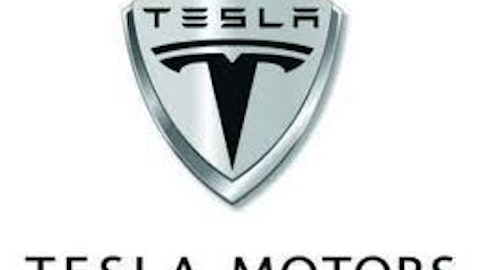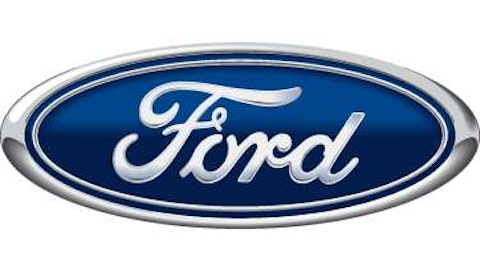Today, DuPont is the second-largest chemical company in the United States by revenue, and is one of the 10 largest chemical companies in the world. The company’s $45.8 billion market cap on its 210th anniversary was a nearly 5.9 million percent gain over the real value of E.I. du Pont’s first powder mills.
The old peaks
The Dow Jones Industrial Average (INDEXDJX:.DJI) closed above 14,000 points for the first time on July 19, 2007. Its final close, 14,000.41, was right on the nose, and was boosted by solid earnings across a wide array of Dow components, including technology stalwarts and industrial manufacturers. However, all eyes remained on Federal Reserve chairman Ben Bernanke, who’d recently warned that subprime mortgage losses might reach to $100 billion.
By the end of July, the Dow had fallen below 14,000 again, but it clawed its way back above that mark by early October. That would be the highest the Dow would reach for years, as the subprime-driven financial meltdown began to wreak havoc on investments of every kind. The Dow finally regained 14,000 points nearly six years later, in the winter of 2013. Time will tell whether it has left that level behind for good.
Seaborne luxury’s simple beginnings
The first Cunard liner, a paddle-wheel steamship called the Britannia, arrived at Boston Harbor on July 19, 1840, after 14 days at sea on its first voyage across the Atlantic. Built for Samuel Cunard’s British and North American Royal Mail Steam-Packet Company primarily as a mail carrier, it was the first of several sister steamships that would establish the only consistent line of service between Britain and the United States, leaving Cunard as one of the last shipping companies standing in a brutally competitive mid-19th-century environment. The company renamed itself, 14 years after Cunard’s death, to the Cunard Steamship Company. At this time, the company began its transition to a more luxurious passenger-liner operator, and in 1881, Cunard launched the first such liner fully rigged with electric lighting.
At the turn of the century, Cunard took on greater prominence in the British consciousness, as German companies began to launch liners of ever larger record-breaking size. Cunard’s answers to this blow to British egos were the Lusitania and Mauretania, the former of which some eagle-eyed history buffs will recognize as the ship that helped push the United States into World War I. Several years after the war, Cunard acquired its former competitor White Star, operator of the infamous Titanic, and, in the 1930s it began construction on the iconic Queen Elizabeth, the original QE.
The Cunard line was acquired by Carnival Corporation (NYSE:CCL), which now operates Cunard as a traditional British-style luxury brand. Cunard presently operates three liners, the Queen Mary 2, the Queen Victoria, and the Queen Elizabeth, the latter of which was built beginning in 2007, and the former of which is the largest ocean-going cruise liner in the world.
Cunard’s rise to prominence was aided by the development of modern ocean-liner construction, which was first put to use to build the SS Great Britain, launched from the Bristol docks exactly three years after the Britannia reached Boston, on July 19, 1843. It was the first iron-hulled, screw-propelled liner in the world, and it set the standards that have contributed to propelled-ship designs for over a century. Although the Great Britain required several major retrofits to fully take advantage of her innovative design in her first years of operation, the durable vessel remained mostly seaworthy (except for one grounding in 1846) until a fire rendered her little more than a floating storage hulk in 1886. Today, the restored Great Britain can be visited at the same Bristol dry docks that launched her, where she stands as a museum to naval history.
Black gold in the great white north
The first commercial discovery of oil in Alaska — then only a territory — took place on July 19, 1957. That day, the Richfield Oil Company struck success at over 11,000 feet deep in a part of what’s now the Kenai National Wildlife Refuge, an area just south of Anchorage. Their well soon began producing 900 barrels per day, and other wells soon came up with oil, too. Once the federal government caught wind of the discovery, Alaskan statehood took on a greater sense of urgency, and the Great White North became the 49th state two years later.
The discovery of the Prudhoe Bay oilfield the following decade turned Alaska into a natural-resource powerhouse. The state’s importance to American energy interests proved so acute during the OPEC oil embargo of 1973, that President Richard Nixon authorized the construction of a Trans-Alaska Pipeline within months of the embargo’s enactment. BP plc (ADR) (NYSE:BP), which now owns Richfield (Richfield became ARCO in 1966 ), also owns nearly half of the Trans-Alaska Pipeline System, which has successfully transported over 17 billion barrels of oil since it came online. All told, Alaska itself has earned over $160 billion in oil revenues since it became a state in 1959.
The article The Dawn of DuPont, and Other Economic Milestones originally appeared on Fool.com is written by Alex Planes.
Fool contributor Alex Planes holds no financial position in any company mentioned here. Add him on Google+ or follow him on Twitter @TMFBiggles for more insight into markets, history, and technology.The Motley Fool recommends General Motors.
Copyright © 1995 – 2013 The Motley Fool, LLC. All rights reserved. The Motley Fool has a disclosure policy.



